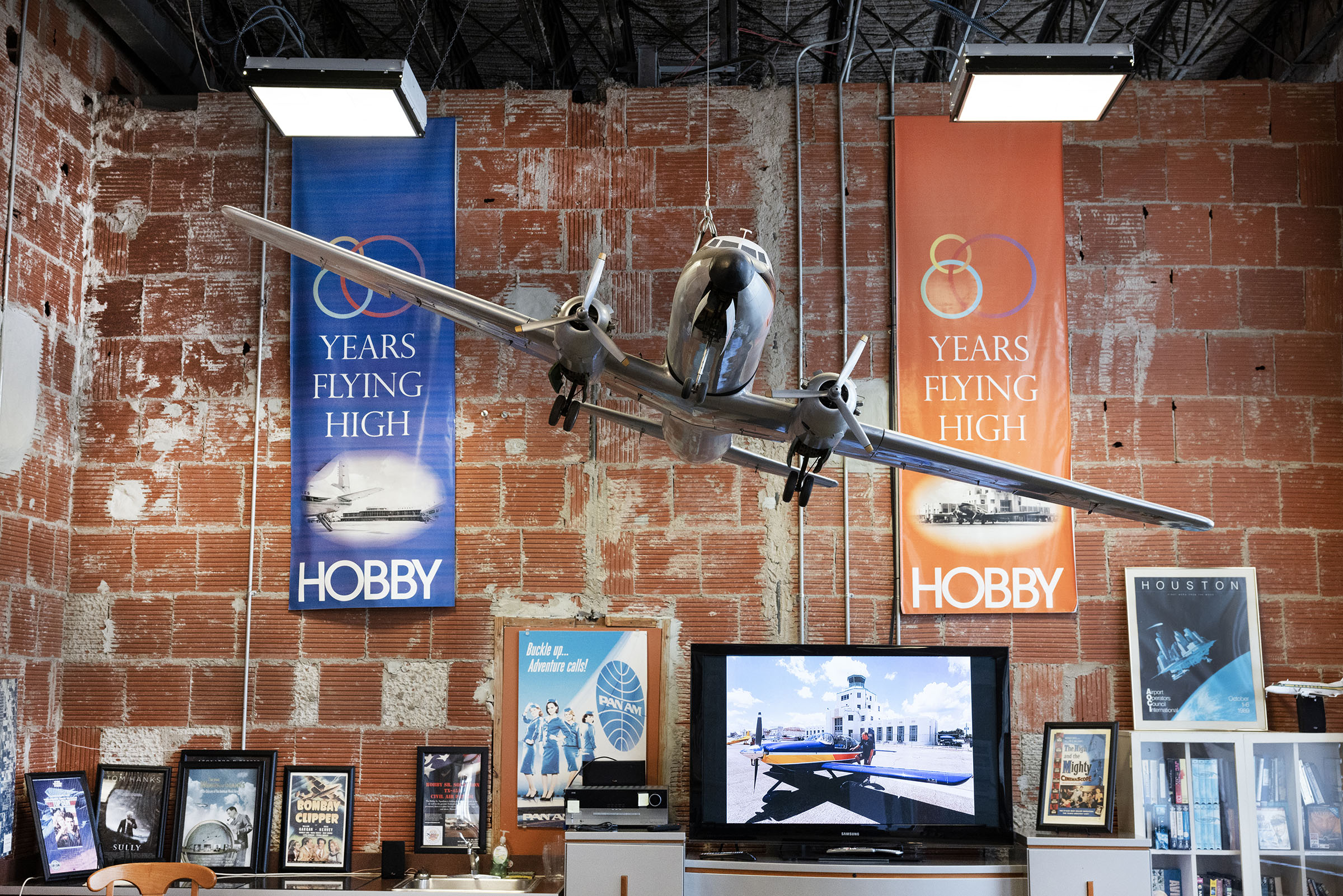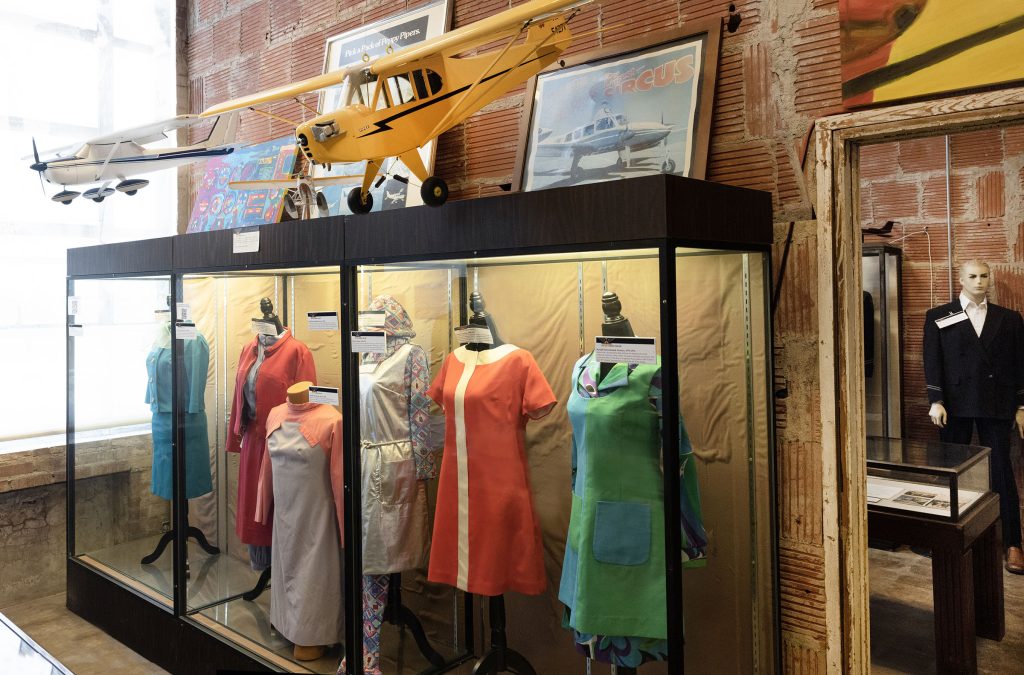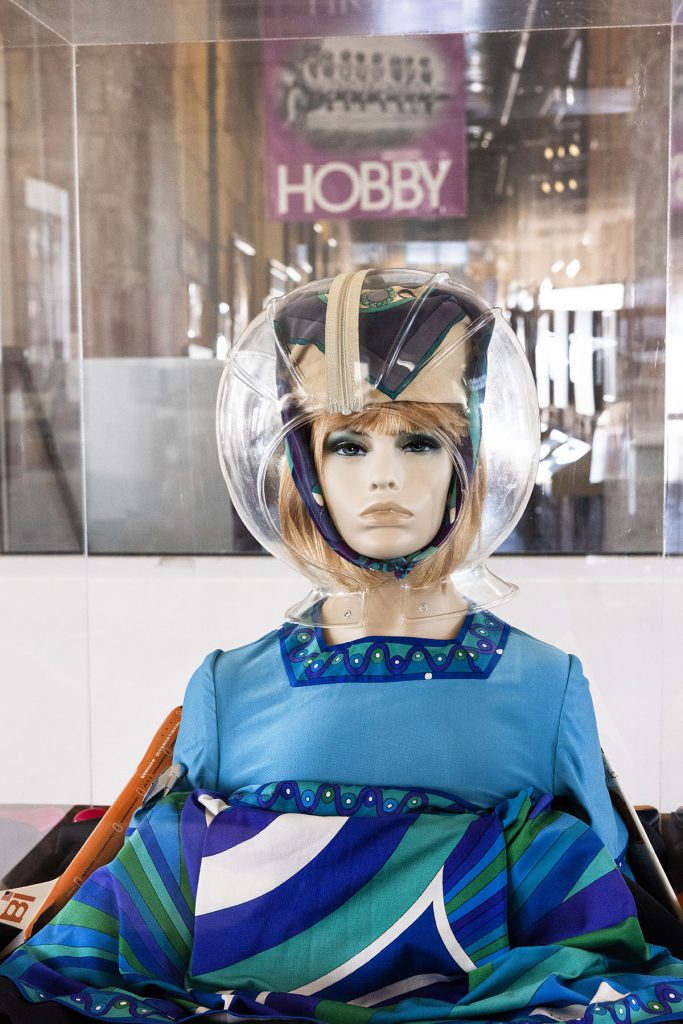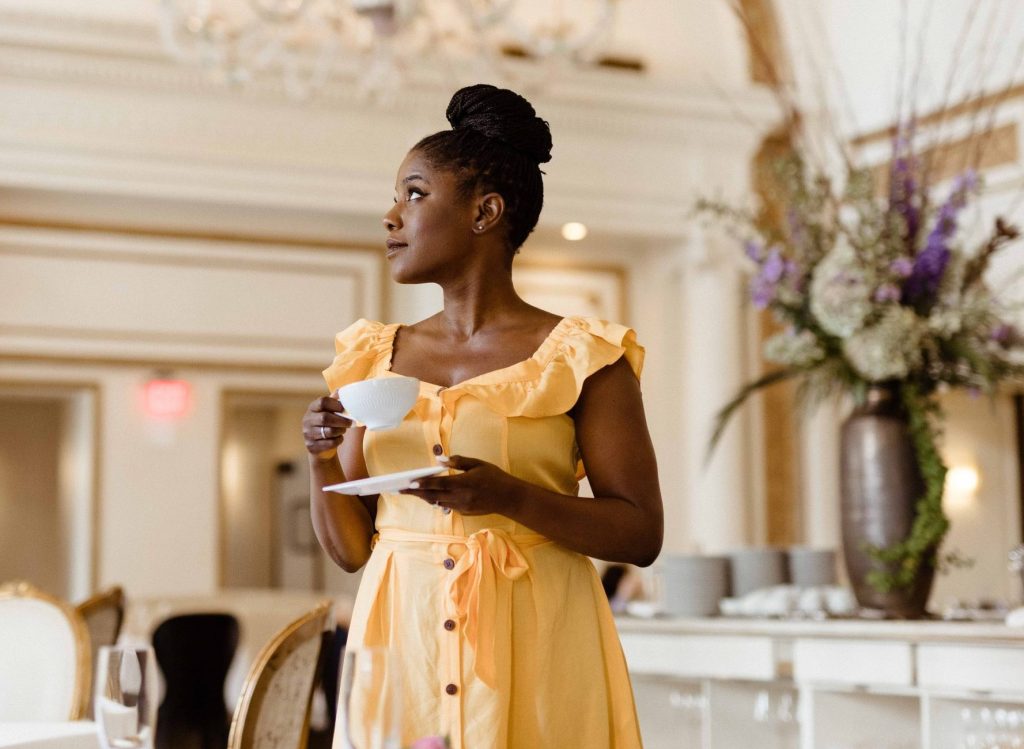
Exhibitions at the 1940 Air Terminal Museum show the history of aviation and its impact on Houston. Photo by John Clark.
From a frieze over the entryway of the 1940 Air Terminal Museum, Mercury, the Roman god of messengers, reaches out to approaching passengers. His arms outstretched, he carries a dove in one hand and a torch in the other, welcoming visitors to the golden age of flight.
1940 Air Terminal Museum
Address: 8325 Travelair St.
Hours: Tue.-Sun., 10 a.m. to 5 p.m.
Admission: $10 for adults, $5 for children
Children 2 and under are free
Phone: 713-454-1940
Website: 1940airterminal.org
This frieze, gracing the museum’s wedding-cake art deco facade, represents another era in air travel, one in which airlines served lobster thermidor on fine bone china and flight attendants wore Pucci-designed dresses. These charming early days of passenger air flight are well preserved through artifacts and user-friendly exhibitions within the museum’s stucco white walls.
It’s easy to forget where we came from. We are so inured to our current flight culture—rigorous security screenings, pretzels for onboard snacks, QR code boarding passes—that we can mistake it for the way it’s always been. This compact retro museum does a good job waking us up to all that came before now.
“The mission of the museum is to demonstrate the impact of aviation on Houston’s community and economic development,” says Maggie Brown, the museum’s executive director. “The building itself is a national historic landmark, so it takes you back in time to when aviation was first starting. The first flight was in 1903, but within 30 years, civilians were flying around the country. So to me, it’s a reminder of the world of possibilities.”
Inaugurated on Sept. 28, 1940, as the Houston Municipal Airport, this 14,500-square-foot building was Houston’s primary commercial air terminal until 1954 when the adjacent Houston International Airport opened, later renamed Hobby. Designed and built by Austrian immigrant Joseph Finger, who also designed Houston City Hall, it was the epicenter of flight for Houston at a time when the city was growing rapidly.

Flight attendants, formerly called airline stewardesses, were dresses that reflect the trends of the 1960s and ’70s. Photo by John Clark.
The museum’s permanent exhibition is a quick and easy ride through the history of air travel in Houston. It tells stories that conjure up how thrilling early flight must have been. For example, on Feb. 18, 1910—seven years after the Wright Brothers flew the first flight in Kitty Hawk, North Carolina—a visiting Frenchman named Louis Paulhan flew a biplane for a crowd of about 2,000 onlookers just 3 miles from the museum. He was paid $20,000 by The Houston Post and Western Land Company to do it. It was the first recorded flight in Texas and was such a sensation that over 6,000 people showed up the next day, paying a dollar to watch the spectacle.
The exhibition evokes a time when the passenger flight industry was not dominated by a handful of super airlines but instead had many options. In 1949, this airport was home to a Texas-centric airline, Trans-Texas Airways, that flew 21-seater jets called Starliners to over 35 Texas towns, from Van Horn to Lufkin. It was nicknamed the “Tree Top Airline” for its low-altitude, short-hop flights. The airline’s promotional flyer in the museum’s collection states: “Serving the Empire of Texas with Connections Everywhere.”
In 1969, Trans-Texas changed its name to Texas International Airlines and added flights to other states and Mexico. The flight attendants, which a museum placard informs us were then known as “stewardesses,” wore beige Western vests, cowgirl hats and boots. The go-to question they were repeatedly asked by passengers was “Where’s your horse?”

Flight attendants wore designer dresses and out-of-this-world styles. Photo by John Clark.
The current temporary exhibition, Fashion Takes Flight, is an enlightening trip into the history of the flight attendant uniform, with artifacts from the very best to the very worst aspects of life as a flight attendant in the 1960s and ’70s. One glass case shows off a Braniff Airways Pucci-designed funky green-and-blue-swirled shift dress that looks like the garb of a ’60s-era Audrey Hepburn. Another displays a 1970s uniform for Southwest Airlines—a pair of bright orange hot pants and lace-up go-go boots.
But it wasn’t all glamorous. On most airlines, flight attendants had to be unmarried and under the age of 35. They also had to be skinny. Some of the exhibition’s documents shock with their weight requirements. Pan Am’s 1972 weight policy required that a 5-foot-2-inch woman weigh no more than 116 pounds. A 1964 letter from Trans-Texas Airways to a flight attendant reads: “Please report to the Hostess Office on June 19, 1964 for a weight check. If at this time you have not lost the weight, you will be removed from flight schedule.”
The story told about women in the world of air flight is more nuanced than just weight restrictions and outfits. During World War II, the first three classes of the Women Airforce Service Pilots (WASP) for the US government were trained here. The museum’s photo of four of these female pilots dressed in their leather bomber jackets, faces beaming, is a refreshing counterweight to the reproachful weight loss letters.
The 1940s Air Terminal Museum is so calm and small and pleasant, it’s hard to imagine it was once a hub where travelers came to catch a flight. The primary travel happening here now is back in time—and it’s an illuminating, worthwhile journey.








